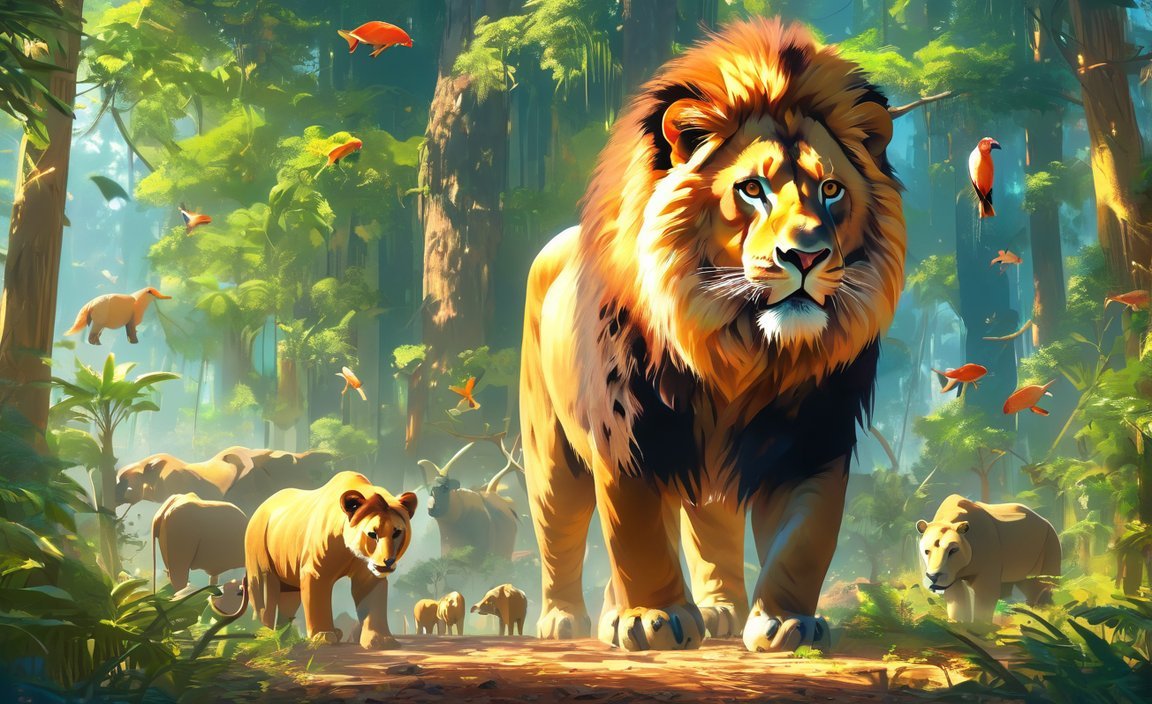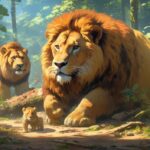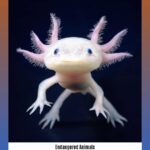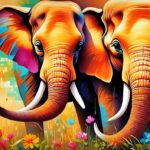Deforestation’s Devastating Impact: Species Facing Extinction
The destructive consequences of deforestation on our planet’s valuable wildlife cannot be ignored. As habitats are cleared for human activities, countless species face the brink of extinction. This alarming reality calls for urgent action to preserve Earth’s biodiversity and protect the future of these vulnerable creatures. In this article, we will delve into the devastating impact of deforestation on species, shedding light on the irreversible loss they face and emphasizing the need for immediate conservation efforts.
Key Takeaways:
1. Orangutans are critically endangered due to deforestation, which destroys their natural habitat in tropical rainforests.
2. Various big cat species, including jaguars, lions, tigers, and leopards, are struggling to survive as their habitats continue to diminish because of deforestation.
3. Pygmy elephants native to Borneo and Sumatra are at serious risk of extinction due to habitat destruction caused by deforestation.
4. Monarch butterflies rely on milkweed plants for migration, and their population has sharply declined due to habitat loss caused by deforestation.
5. The Formosan clouded leopard and paradise parrot are on the brink of extinction due to deforestation destroying their habitats.
6. The St. Helena olive, Hawaiian crow, pygmy raccoon, Kāmaʻo bird, Sumatran orangutan, and Kākāwahie bird have all either become extinct or critically endangered due to deforestation.
7. Urgent action is needed to address deforestation, preserve biodiversity, and ensure the survival of these species facing extinction.
Animals Becoming Extinct Due to Deforestation
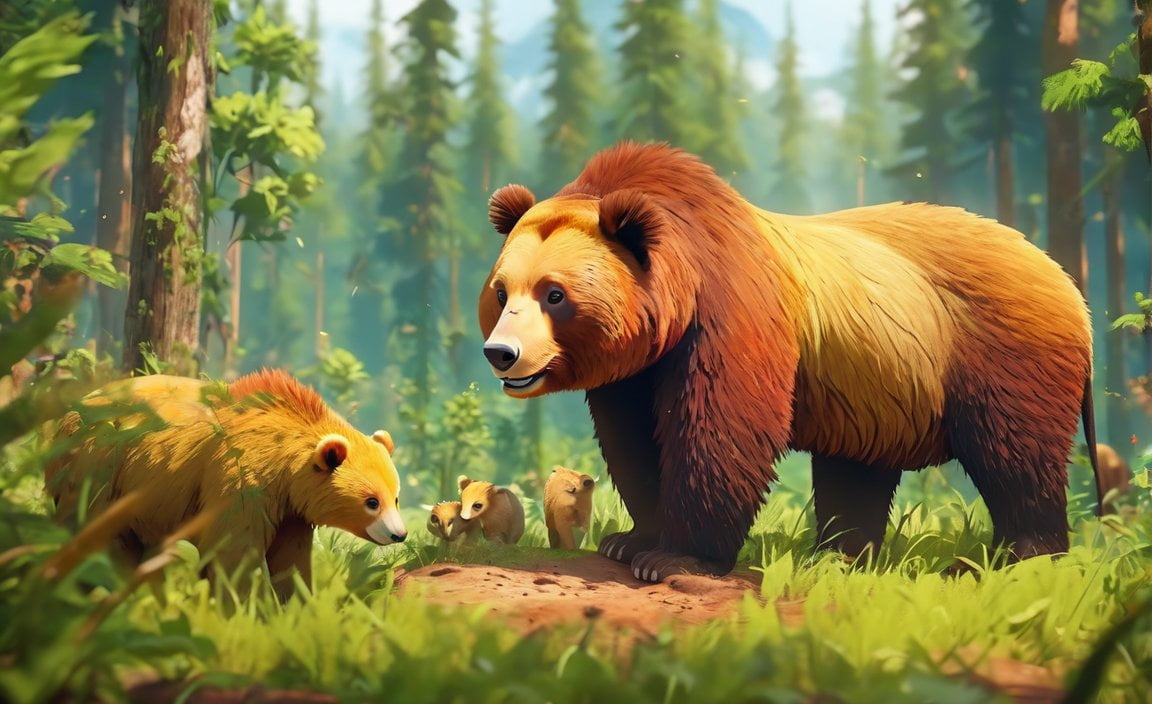
Orangutans: The Vanishing Kings of the Rainforest
Orangutans, those majestic kings of the rainforest, are teetering on the edge of extinction due to rampant deforestation. These critically endangered creatures have seen their natural habitat dwindle and disappear before their eyes. In tropical rainforests, where they once thrived, the destruction of trees and forests has significantly reduced their population. The heart-wrenching reality is that orangutans are bearing the brunt of deforestation’s devastating impact.
Big Cats: Fading Shadows in a Shrinking World
Picture a world without the regal grace of jaguars, lions, tigers, and leopards. These magnificent big cats, once the epitome of power and beauty, are now struggling for survival. As their habitats continue to diminish due to deforestation, these graceful predators find themselves in a perilous state. The shrinking world of big cats serves as a heartbreaking testament to the profound consequences of our actions.
Pygmy Elephants: Adorably Imperiled
Native to Borneo and Sumatra, pygmy elephants have become iconic symbols of cuteness and vulnerability. However, their future hangs by a thread as their homes crumble under the axe and bulldozer. Deforestation has destroyed their precious habitat, pushing them closer to the brink of extinction. The adorably imperiled pygmy elephants are a stark reminder of how deforestation robs us of precious biodiversity.
Monarch Butterflies: Vanishing Wings of Beauty
Imagine a world without the enchanting flutter of monarch butterflies. These delicate creatures, dependent on milkweed plants for their migration, face an uncertain future. Deforestation has obliterated the very plants they rely on, leading to a sharp decline in their population. The vanishing wings of beauty serve as a somber reminder of the fragile balance between nature and human actions.
Formosan Clouded Leopard: A Last Glimpse of the Elusive
Don’t let the name fool you – the Formosan clouded leopard is a unique species, distant from its leopard relatives. Sadly, their elusiveness has been eclipsed by the destruction of their habitat. Deforestation has pushed this mesmerizing creature to the brink of extinction, leaving us with a haunting reminder of the irreversible loss caused by deforestation.
Paradise Parrot: Forever Lost in Paradise
Once found in northern Australia, the paradise parrot now exists only in memories and books. Deforestation ravaged their native rainforest, wiping out their population. As their habitat was cleared for agriculture, the paradise parrot succumbed to extinction, leaving us with a painful lesson in the irrevocable consequences of deforestation.
St. Helena Olive: A Silent Tragedy
Imagine the eerie silence where a vibrant rainforest once echoed with the chirps and calls of the St. Helena olive. This tree-dwelling bird species tragically met its demise as deforestation obliterated their habitat on the remote island of St. Helena. The silent tragedy of the St. Helena olive underscores the urgency to protect and preserve our natural world.
Hawaiian Crow: A Melancholic Lament
The Hawaiian crow, known as the ‘Alala,’ has become a poignant symbol of imminent loss. Deforestation has ravaged their Hawaiian island homes, leaving these intelligent and rare birds critically endangered. Their declining numbers serve as a melancholic lament for the consequences of deforestation on unique and irreplaceable species.
Pygmy Raccoon: Teetering on the Precipice
Meet the pygmy raccoon, a tiny creature exclusively found on Cozumel Island in Mexico. Once abundant, their population is now critically endangered due to habitat loss caused by deforestation. As their forest home continues to be destroyed, these adorable creatures teeter on the precipice of extinction, illustrating the urgent need to address deforestation’s devastating impact.
Kāmaʻo: A Song Silenced Forever
Consider the haunting silence that surrounds the Kāmaʻo, a bird species native to Hawaii. Deforestation has sealed their fate, rendering them extinct. The loss of their habitat played a critical role in their disappearance, leaving us with a stark reminder of the irreversible price we pay for deforestation.
Sumatran Orangutan: Holding On Against the Odds
Similar to their Bornean relatives, the Sumatran orangutans are clinging to survival in the face of deforestation. The destruction of their habitat has caused a significant decline in their population. These incredible creatures are fighting against the odds, highlighting the urgent need to protect their remaining homes.
Kākāwahie: A Melancholy Farewell
Once a resident of Oahu, Hawaii, the Kākāwahie, also known as the Oahu ‘Elepaio, now exists only in memory and history books. Deforestation dealt a severe blow to their habitat, contributing to their extinction. The melancholy farewell of the Kākāwahie serves as a tragic reminder of the price we pay when we disregard the consequences of deforestation.
In conclusion, the impact of deforestation on animal species is devastating. From the regal orangutans to the delicate monarch butterflies, countless creatures face the threat of extinction due to the loss of their natural habitats. The urgency to address deforestation, preserve biodiversity, and secure the future of these magnificent species cannot be overstated. Let us heed the silent call and take action to protect our planet’s wildlife for generations to come.
Sources:
[^1^]: Species Going Extinct Due to Deforestation: 5 Important Examples
[^2^]: 13 Animals That Have Gone Extinct Due to Deforestation
The Amazon rainforest is experiencing a devastating loss of biodiversity due to deforestation. Discover more about animal extinction in the Amazon rainforest by clicking on this link.
Deforestation is not only destroying the Amazon rainforest, but it is also causing animals to go extinct. Learn more about how animals are going extinct due to deforestation by clicking on this link.
The Amazon rainforest is home to numerous unique species, but unfortunately, many of them are at risk of extinction. Find out more about the animals that are going extinct in the Amazon rainforest by clicking on this link.
Deforestation has already caused the extinction of several animal species. Explore a list of animals that have gone extinct due to deforestation by clicking on this link.
The devastating effects of deforestation have led to the extinction of various animal species. Delve deeper into the animals that went extinct because of deforestation by clicking on this link.
Overview of the specific endangered species affected by deforestation
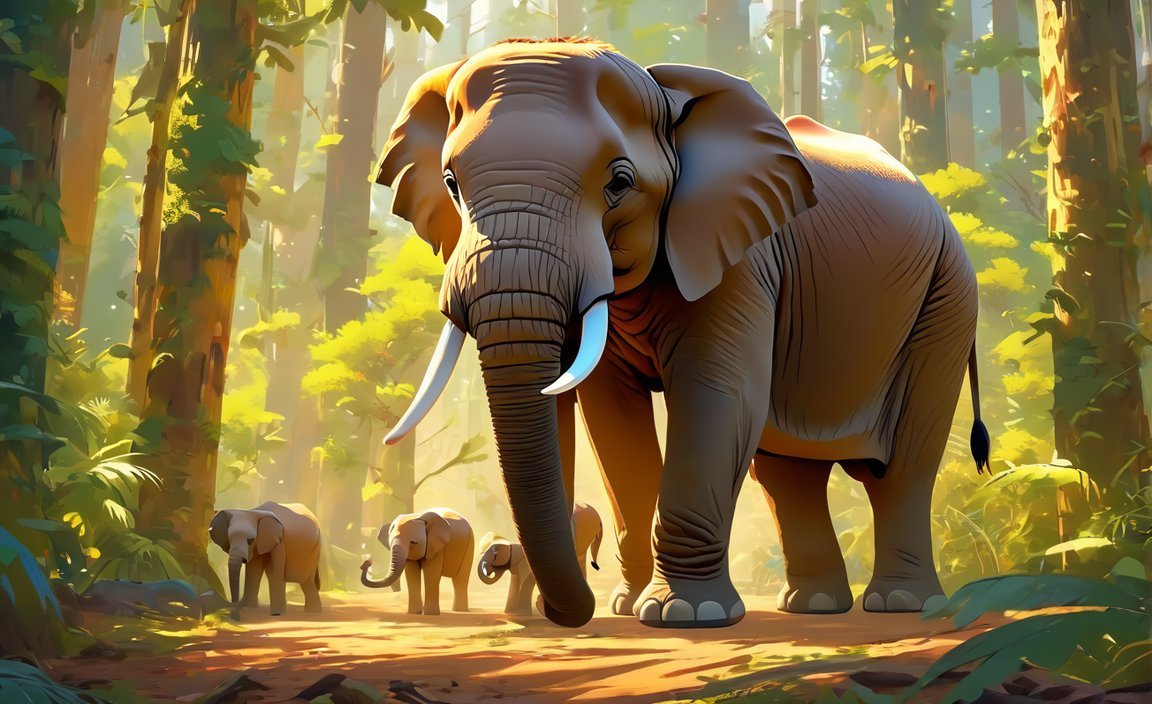
Deforestation, the widespread clearing of forests, has dire consequences for our planet’s biodiversity and has greatly impacted numerous species and their habitats. This destructive practice not only threatens the existence of endangered species but also exacerbates climate change. In this article, we will explore the devastating effects of deforestation on specific endangered species, shedding light on the urgency of conservation efforts.
The Impact of Deforestation on Endangered Species
Loss of habitat is one of the primary reasons why species become endangered, and deforestation plays a significant role in destroying these crucial habitats. Many animals, including orangutans, tigers, and gorillas, heavily rely on forested ecosystems for their survival. However, as their habitats are destroyed by deforestation, these magnificent creatures face an increased risk of extinction.
For example, orangutans, with their striking resemblance to humans and remarkable intelligence, are critically endangered due to deforestation. As their forest homes in Southeast Asia are decimated, their populations dwindle, leaving them on the brink of extinction.
Big cats, such as jaguars, lions, tigers, and leopards, also face an uncertain future as their habitats diminish due to deforestation. These majestic predators depend on the dense forests and lush vegetation to hunt and thrive. Without their natural habitats, their populations decline rapidly, pushing them closer to extinction.
Additionally, pygmy elephants in Borneo and Sumatra find themselves vulnerable as their homes are destroyed by deforestation. These gentle giants, known for their smaller size and unique behaviors, rely on the vast rainforests for food, water, and shelter. With their habitats fragmented and diminished, their survival is under severe threat.
Deforestation and Wildlife Trade: A Deadly Combination
The impacts of deforestation are compounded by another significant threat: wildlife trade. Recent studies have revealed that the combined impacts of deforestation and wildlife trade pose an even greater risk to commercially valuable species than previously thought.
In rainforest areas converted into palm oil plantations in Africa, Latin America, and Asia, the consequences of deforestation are particularly evident. Species like orangutans, tigers, elephants, and rhinos are suffering as large areas of rainforest are cleared for palm crops. This destruction isolates and diminishes their food and shelter sources, pushing these animals towards extinction.
The Devastating Consequences
The repercussions of deforestation extend beyond the loss of species and their habitats. Forests play a critical role in the carbon cycle, absorbing and storing significant amounts of carbon dioxide. Disrupting this process through deforestation intensifies climate change impacts, contributing to increased greenhouse gas emissions.
Furthermore, localized deforestation can lead to extinctions, as many unique species exist in small geographic locations. This creates a heightened urgency to protect even isolated patches of forest to preserve these vulnerable creatures and maintain biodiversity.
Key Takeaways:
- Deforestation poses a major threat to endangered species, as loss of habitat is one of the main reasons they become endangered.
- Species such as orangutans, tigers, and gorillas heavily rely on forested habitats for survival, making them particularly vulnerable to the effects of deforestation.
- The combined impacts of deforestation and wildlife trade exacerbate the risk of extinction for commercially valuable species.
- The destruction of rainforests, particularly for palm oil plantations, isolates and diminishes the food and shelter sources for animals such as orangutans, tigers, elephants, and rhinos.
- Deforestation disrupts the carbon cycle and contributes to climate change by releasing stored carbon dioxide into the atmosphere.
- Localized deforestation can lead to extinctions, as many unique species exist in small geographic locations.
Sources:
1. World Wildlife Fund. “Deforestation and Forest Degradation.”
2. National Geographic Society. “Endangered Species.”
Analysis of the Immediate and Long-Term Consequences of Animal Extinction
Deforestation, driven by human activities, poses a grave threat to our planet’s biodiversity. The consequences of animal extinction resulting from deforestation have immediate and long-term impacts on ecosystems. Understanding these effects is crucial in protecting our natural world and ensuring a sustainable future.
The Devastating Impacts of Deforestation on Species
Deforestation, primarily caused by human expansion for housing, agriculture, and commerce, is the leading threat to animal species. When habitats are destroyed, animals lose their homes and struggle to find food and shelter. This loss of habitat directly contributes to the extinction of countless species.
One of the immediate consequences of deforestation is the disappearance of species that rely on specific plants or habitats. For example, butterflies are highly vulnerable to deforestation as their caterpillars depend on specific plant species that are lost to development or farming. This disruption in their lifecycle ultimately leads to their extinction.
According to the International Union for Conservation of Nature, over 28,000 species of animals and plants are considered threatened due to habitat loss caused by deforestation. This staggering number highlights the urgent need to address this issue and protect vulnerable species from extinction.
Disease and Extinction
Deforestation not only directly causes habitat loss but also contributes to the spread of diseases among animal populations. Diseases like chytridiomycosis, a fungal infection, have decimated global animal populations since the 1980s. The destruction of habitats through deforestation creates favorable conditions for the rapid spread of such diseases, further endangering species.
Profound Effects on Ecosystems
The extinction of animal species has far-reaching and long-lasting effects on ecosystems. Each species plays a unique role in maintaining the balance and functionality of their respective habitats. When a species becomes extinct, it disrupts the intricate web of interactions within ecosystems. This disruption can have cascading effects on other species, leading to a loss of biodiversity and ecosystem functioning.
The Current Extinction Crisis
We are currently facing a global extinction crisis, exacerbated by the impacts of deforestation and global warming. Alarmingly, estimates suggest that up to a million animal and plant species are threatened with extinction. The immediate and long-term consequences of this crisis are dire, as entire ecosystems and the services they provide are at risk.
Key Takeaways:
- Deforestation is the primary driver of animal extinction, caused by human expansion for housing, agriculture, and commerce.
- Habitat loss leads to the disappearance of species, such as butterflies, whose caterpillars rely on specific plants that are lost to development or farming.
- Over 28,000 species of animals and plants are considered threatened by the International Union for Conservation of Nature due to deforestation.
- Disease, like chytridiomycosis, spreads rapidly among animal populations in deforested areas, further endangering species.
- The extinction of species has profound effects on ecosystems, disrupting the balance and functionality of habitats.
- The current extinction crisis is accompanied by global warming, intensifying the impacts of deforestation on land and shallow seas.
- Up to a million animal and plant species are threatened with extinction, highlighting the urgent need to address deforestation and preserve biodiversity.
Sources:
1. National Geographic: “What we lose when animals go extinct”
2. Nature: “Extinction magnitude of animals in the near future”
Call to Action and Potential Solutions to Combat Deforestation and Protect Endangered Species
Deforestation has become a global crisis, with devastating consequences for our planet’s wildlife and ecosystems. The loss of forests not only threatens the survival of endangered species but also contributes to climate change and biodiversity loss. It’s crucial that we take immediate action to combat deforestation and protect these vulnerable creatures. Here are some potential solutions and a call to action to address this urgent issue.
Protecting Forests and Wildlife: Taking Responsibility
To combat deforestation, it is essential for individuals, companies, governments, and organizations to take responsibility and implement sustainable practices. Each and every one of us has the power to make a difference through our everyday choices and actions. By being conscious consumers and making informed decisions, we can contribute to the preservation of forests and the protection of endangered species.
Key Takeaways:
– By consuming less, avoiding single-use packaging, eating sustainable food, and choosing recycled or responsibly-produced wood products, we can help protect forests. (Source: Greenpeace USA)
– Companies can make a significant impact by embracing sustainable practices and implementing responsible sourcing policies. (Source: Greenpeace USA)
– Respecting the rights of Indigenous Peoples, who have been living in forests for thousands of years, is crucial for forest conservation. (Source: Greenpeace USA)
– Government action on both domestic and international levels is necessary to stop deforestation and protect forests. (Source: Greenpeace USA)
– Protecting forests can stabilize the climate, safeguard biodiversity, and ensure the survival of wildlife. (Source: Greentumble)
– Collaborative initiatives between environmental organizations, suppliers, and stakeholders can promote no deforestation practices. (Source: Greenpeace Australia Pacific)
– Implementing landscape management approaches can address the drivers of deforestation and promote sustainable land use. (Source: The World Bank)
– Tropical rainforests are particularly vulnerable to deforestation, leading to the loss of high biodiversity and vital habitats. (Source: Greenpeace Australia Pacific)
The Urgent Call to Action
The urgency of the situation requires swift action from all sectors of society. We must raise awareness about deforestation’s devastating impact on wildlife and inspire others to join the fight to protect our natural world. It’s time to amplify the voices of endangered species and advocate for their survival.
It all starts with understanding the importance of biodiversity and the interconnectedness of all living beings. By educating ourselves and others about the consequences of deforestation, we can create a sense of urgency and inspire action. Infusing our storytelling with evidence-based research, we can shed light on the plight of endangered species and the irreversible loss they face.
As individuals, we can make a difference in our daily lives. Consuming sustainably, reducing waste, and supporting companies that prioritize responsible practices are simple yet powerful steps we can take. By making informed choices, we can collectively contribute to the protection of forests and the conservation of endangered species.
Key Takeaways:
– Making informed daily choices can make a difference in the fight to save forests. (Source: Greenpeace USA)
– The combined impacts of deforestation and wildlife trade pose a significant threat to species. (Source: Nature)
– Forests act as carbon sinks, helping mitigate greenhouse gas emissions. The loss of forests intensifies climate change impacts. (Source: National Geographic Society)
– Loss of habitat is one of the main reasons species become endangered. (Source: National Geographic Society)
– Deforestation disrupts the carbon cycle and contributes to climate change, impacting ecosystems and biodiversity. (Source: Ecologi)
– It is estimated that up to a million animal and plant species are threatened by extinction. (Source: National Geographic)
– The main causes of extinction include habitat loss, overexploitation, invasive species, pollution, and climate change. (Source: Royal Society)
– The impending extinction of species highlights the loss of biodiversity and the need for action. (Source: The New York Times)
Join the Movement: Protect Our Natural World
We have the power to shape the future of our planet. It’s time to join the movement and protect our natural world for present and future generations. By raising our voices, supporting conservation efforts, and advocating for strong policies, we can make a tangible impact in the fight against deforestation and the protection of endangered species.
Together, we can inspire change, promote sustainable practices, and create a world where forests thrive, biodiversity flourishes, and endangered species are given a fighting chance. Let us act now, before it’s too late.
Key Takeaways:
– The extinction of species has profound effects on ecosystems and requires immediate action. (Source: Wild Life Risk)
– Global warming and its impact on land and shallow seas contribute to the current extinction crisis. (Source: Nature)
– It is crucial to address the loss and degradation of habitats, overexploitation, invasive species, pollution, and climate change to prevent extinction. (Source: Royal Society)
– Taking responsibility and implementing sustainable practices at individual, corporate, and governmental levels are essential to combat deforestation. (Source: Greenpeace USA)
– By educating ourselves, advocating for change, and making sustainable choices, we can protect forests and endangered species. (Source: Greenpeace USA)
Sources:
1. Greenpeace USA
2. Greenpeace Australia Pacific
3. Greentumble
4. The World Bank
5. National Geographic Society
6. Nature
7. Royal Society
8. The New York Times
Remember, together we can make a difference and protect the diverse and magnificent creatures that inhabit our planet. Take action, spread awareness, and champion the cause of forest conservation and the preservation of endangered species.
By [Your Name]
FAQ
Q1: Which animal species are facing extinction due to deforestation?
A1: Several animal species are facing extinction due to deforestation, including orangutans, big cats (such as jaguars, lions, tigers, and leopards), pygmy elephants, monarch butterflies, Formosan clouded leopards, paradise parrots, St. Helena olive birds, Hawaiian crows, pygmy raccoons, Kāmaʻo birds, Sumatran orangutans, and Kākāwahie birds.
Q2: What is the primary cause of species extinction related to deforestation?
A2: The primary cause of species extinction related to deforestation is the loss of natural habitats. As forests are cleared or removed, animal species lose their essential habitats, leading to a decline in their populations and ultimately putting them at risk of extinction.
Q3: How does deforestation impact animal species?
A3: Deforestation impacts animal species by destroying their natural habitats. This loss of habitat disrupts the intricate relationship between animals and their environment, making it challenging for them to find food, shelter, and resources necessary for their survival. The reduction in available habitat leads to population decline and puts species at greater risk of extinction.
Q4: Are there any specific examples of animal species that have gone extinct due to deforestation?
A4: Yes, several animal species have gone extinct primarily due to deforestation. Examples include the paradise parrot, St. Helena olive bird, Hawaiian crow, pygmy raccoon, Kākāwahie bird, and the extinct Kāmaʻo bird, among others. These species lost their habitats as a result of deforestation, leading to their ultimate extinction.
Q5: What can be done to prevent the extinction of animal species due to deforestation?
A5: To prevent the extinction of animal species due to deforestation, it is crucial to address deforestation as a global issue. Protecting and preserving natural habitats, implementing sustainable land-use practices, promoting reforestation initiatives, and supporting conservation efforts are some steps that can be taken. Additionally, raising awareness, advocating for stronger environmental policies, and supporting organizations focused on wildlife conservation can also contribute to preventing species extinction.
- Sept 31 Myth: Unveiling Calendar Secrets - March 18, 2025
- How Long & Till December 18, 2025: Accurate Countdown Guide - March 18, 2025
- Discover Japanese Artists: A Complete History - March 18, 2025
